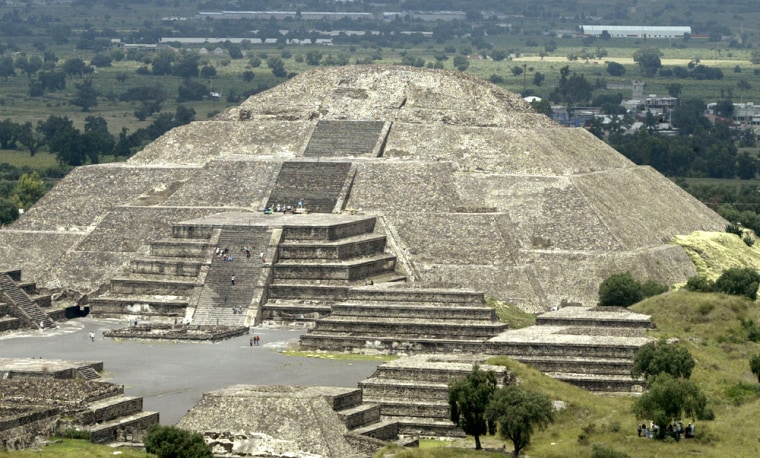The discovery of a tomb filled with decapitated bodies suggests that Mexico's 2,000-year-old "Pyramid of the Moon" may have been the site of horrifically gory sacrifices, archaeologists said Thursday.
The tomb at Teotihuacan, the first major city built in the Americas, whose origins are one of history's great mysteries, also held the bound carcasses of eagles, dogs and other animals.
"It is hard to believe that the ritual consisted of clean, symbolic performances — it is most likely that the ceremony created a horrible scene of bloodshed with sacrificed people and animals," said Saburo Sugiyama, one of the scientists leading the ongoing dig. "Whether the victims and animals were killed at the site or a nearby place, this foundation ritual must have been one of the most terrifying acts recorded archaeologically in Mesoamerica."
Of the 12 human bodies found, 10 were decapitated and then tossed, rather than arranged, on one side of the burial site. The two other bodies were richly ornamented with beads and a necklace made of imitation human jaws.
'Where Men Become Gods'
The Aztecs came across Teotihuacan's towering stone pyramids in about 1500, centuries after the city was torched and abandoned. It is not known what language its inhabitants spoke, but the Aztecs named it "The Place Where Men Become Gods," believing it was a divine site.
A major tourist site, it lies about 35 miles (56 kilometers) northeast of Mexico City.
After 200 years of excavations, archaeologists are still largely in the dark about the origins of the city, which is believed to have housed 200,000 people at its peak in the year 500 — rivaling Shakespeare's London, but a millennium earlier.
Sugiyama said the nearly complete excavation indicates that the Pyramid of the Moon was significant to its builders as a site for celebrating state power through ceremony and sacrifice.
Did sacrifices symbolize power?
The sacrifices were carried out during the expansion of one of the city's major monuments, suggesting the government wanted to symbolize growing sacred political power.
"Contrary to some past interpretation, militarism was apparently central to the city's culture," the excavation team said in a statement.
The master-planned city-state collapsed around the year 700, an event as mysterious as its formation.
It was the site of a modern-day controversy earlier this year when protesters fought and lost a battle to keep the Mexican unit of retail giant Wal-Mart Stores Inc. from building a new store a half-mile (800 meters) away.
